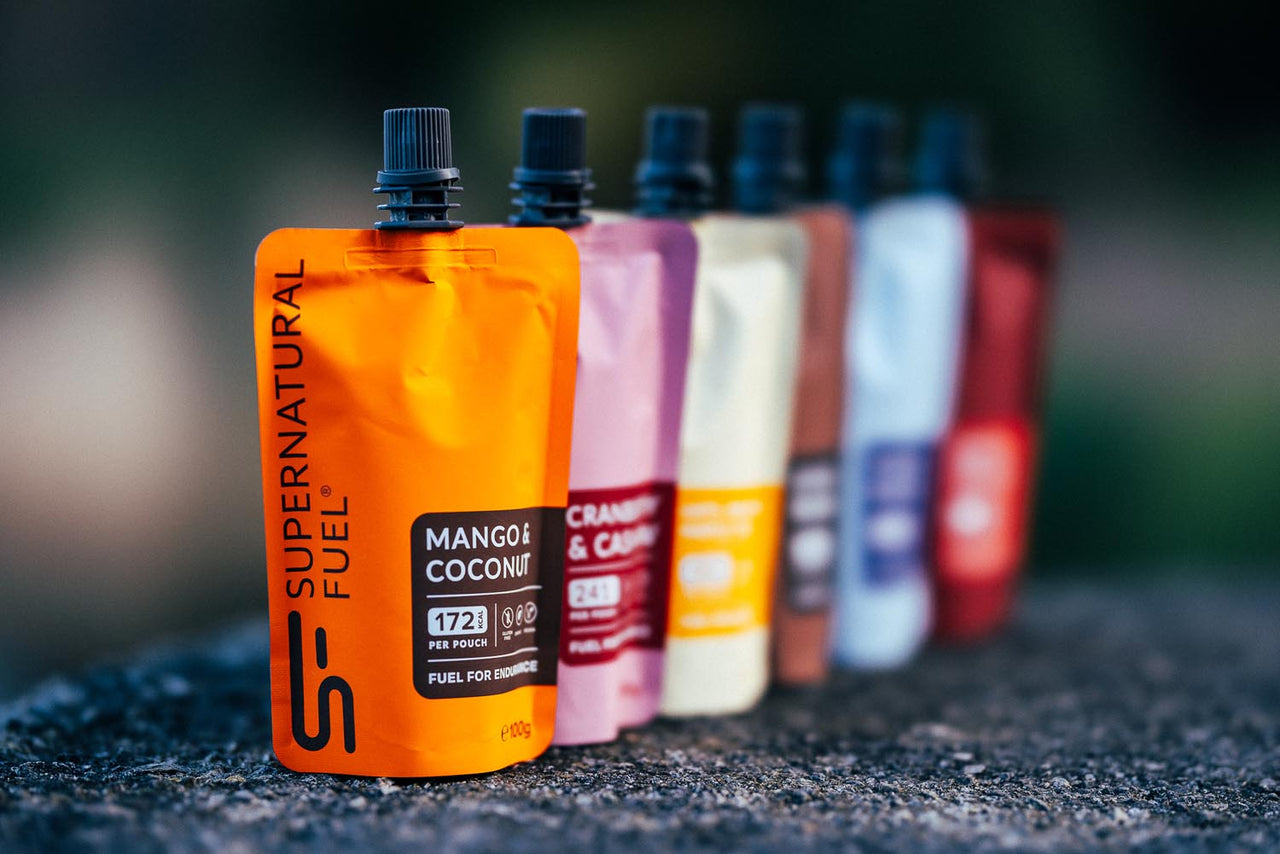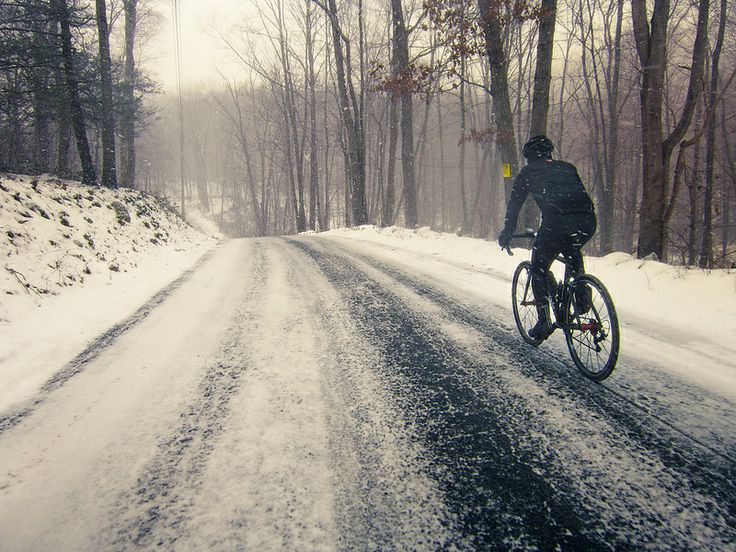
Training and racing in challenging Winter conditions
In the realm of endurance sports, the unpredictability of winter presents a unique range of challenges to overcome.
These winter challenges are often the draw for athletes looking to test themselves in harsh environments, but ensuring you prepare fully is essential for your success.
This goes beyond simple physical fitness, it requires meticulous preparation encompassing equipment testing, mental skills, and strategic nutrition.
Safety
As endurance athletes, taking on winter challenges the chances are you consider yourself to have a good level of experience. A common myth is most incidents requiring mountain rescue involve those with less experience, however, the Mountain Rescue Committee of Scotland (MRCS) report found 62% of incidents occurred to those classed as ‘experienced’ compared to 38% who were ‘inexperienced’ and of these 14% of rescue incidents were attributed to human error. Most mountaineering incidents involve hill walkers and on hill paths.
So, appreciating the statistics from Mountain Rescue it is easy to see how as endurance athletes preparing for winter races, we need to appreciate the risks involved.
Being physically fit can also influence your risk perception, and thus you should pause to concentrate on the task at hand as your error rate may increase during challenging conditions. For example, decision making is often impaired when we are tired and hungry, we therefore want to consider how we can keep the mind sharp. This might be nutrition planning, such as ensuring you have enough food with you including fast acting carbohydrates or a caffeine stimulus during periods where high concentration is required.
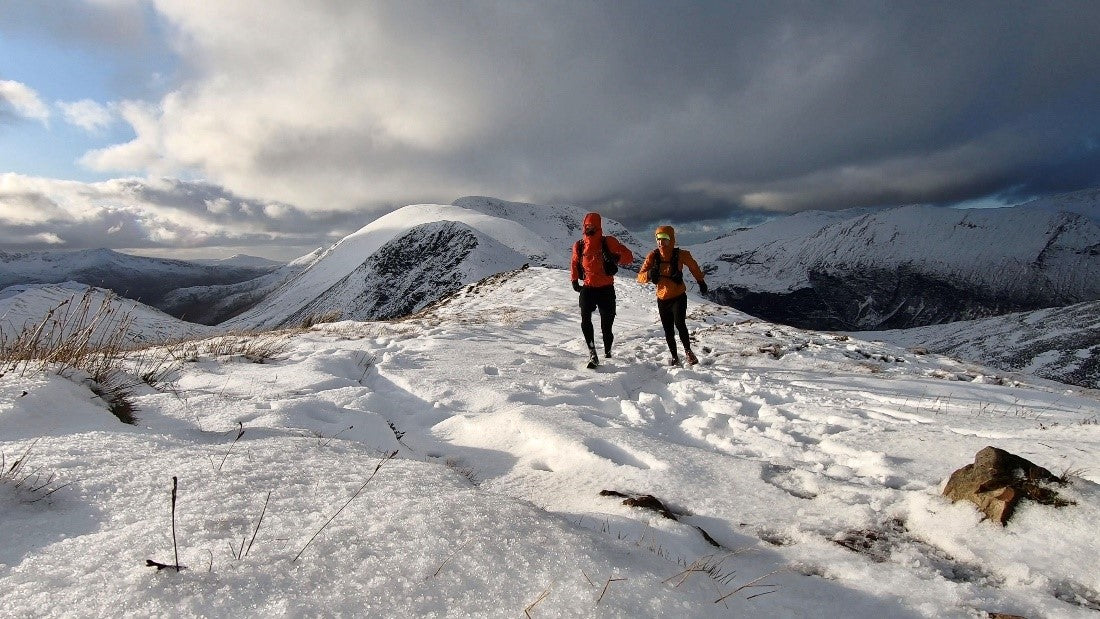
There are of course degrees of ‘bad’ and you need to ensure you have checked the appropriate weather forecast service, such as the Mountain Weather Information Service.
Don’t put yourself in a situation where you are likely to become another statistic yourself. But by getting out in adverse conditions in training you will encounter a wide range of things that can (and will) go ‘wrong’ on race day.
Come up with your own list of problems, and then the ‘actions on’ for what you do if this happens on race day.
By preparing for every eventuality if it then does happen you don’t panic and will simply work through the pre-prepared action plan.
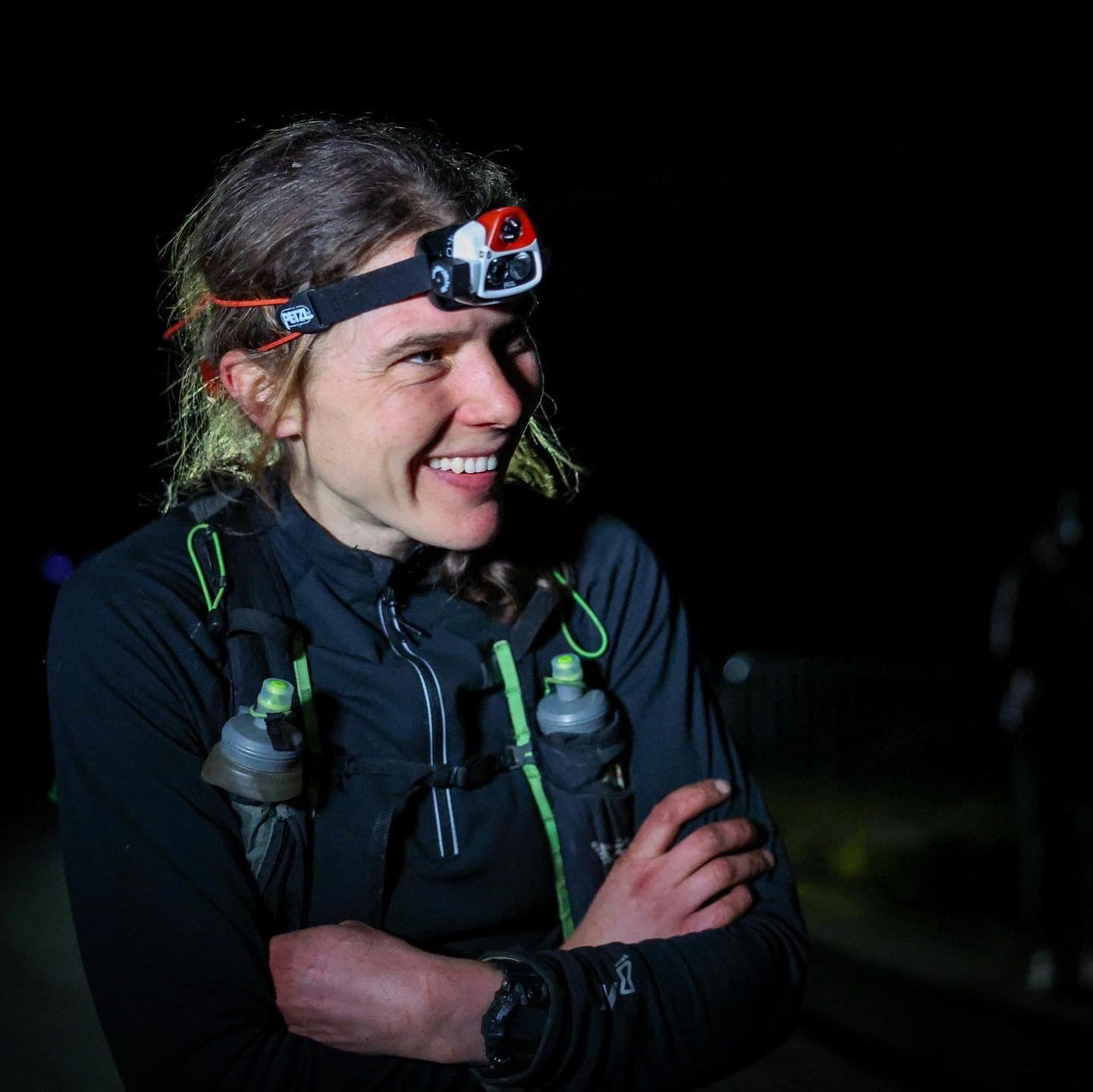
Equipment
With the winter months comes short days and long nights. An essential piece of equipment to carry is therefore a headtorch, irrespective of the length of your run planned. A simple ‘emergency’ light such as the petzl e-lite which is the size of a matchbox could be enough to get you out of trouble if your run takes longer than anticipated. If you are anticipating going into the dark then carry your main headtorch and spare battery. The cold can quickly drain batteries so even if you think your main battery is charged, carry a spare.
Another item which is always at the bottom of my pack is an emergency bivi bag (eg the SOL bag). If you have to stop for any reason, you will quickly get very very cold, and mountain rescue could take several hours to reach you in more remote areas. Foil blankets will simply flap around in the wind and offer no real thermal benefits, but an emergency foil bivi can quickly re-warm you and offer some protection from the elements. If you are doing a bigger expedition race, such as the Spine race events, then you will need a more robust bivi than even this. But for any normal training runs I will have an emergency bivi in my pack.
You then need to ensure you are wearing, or carrying, weather appropriate gear. Waterproof and wind resistant clothing, layers (and additional layers) for warmth, suitable footwear with grip designed for the terrain you are on. When partaking in winter endurance events there is always a detailed, and extensive, kit list for a reason, and while you can go for lightweight kit you need to ensure if can do the job if needed in anger.
Learn to map read and use a compass! While most of us will have a GPS device strapped to our wrist there remains the risk that in cold weather the battery will drain, your watch could get damaged, or in a white out you get severely disorientated. Knowing how to use a compass (and map) could mean the difference between getting off the hill…. and not. Especially if you have mapped a route on your watch but then need to adapt and change your route, perhaps due to snow, ice or flooding on a certain section.
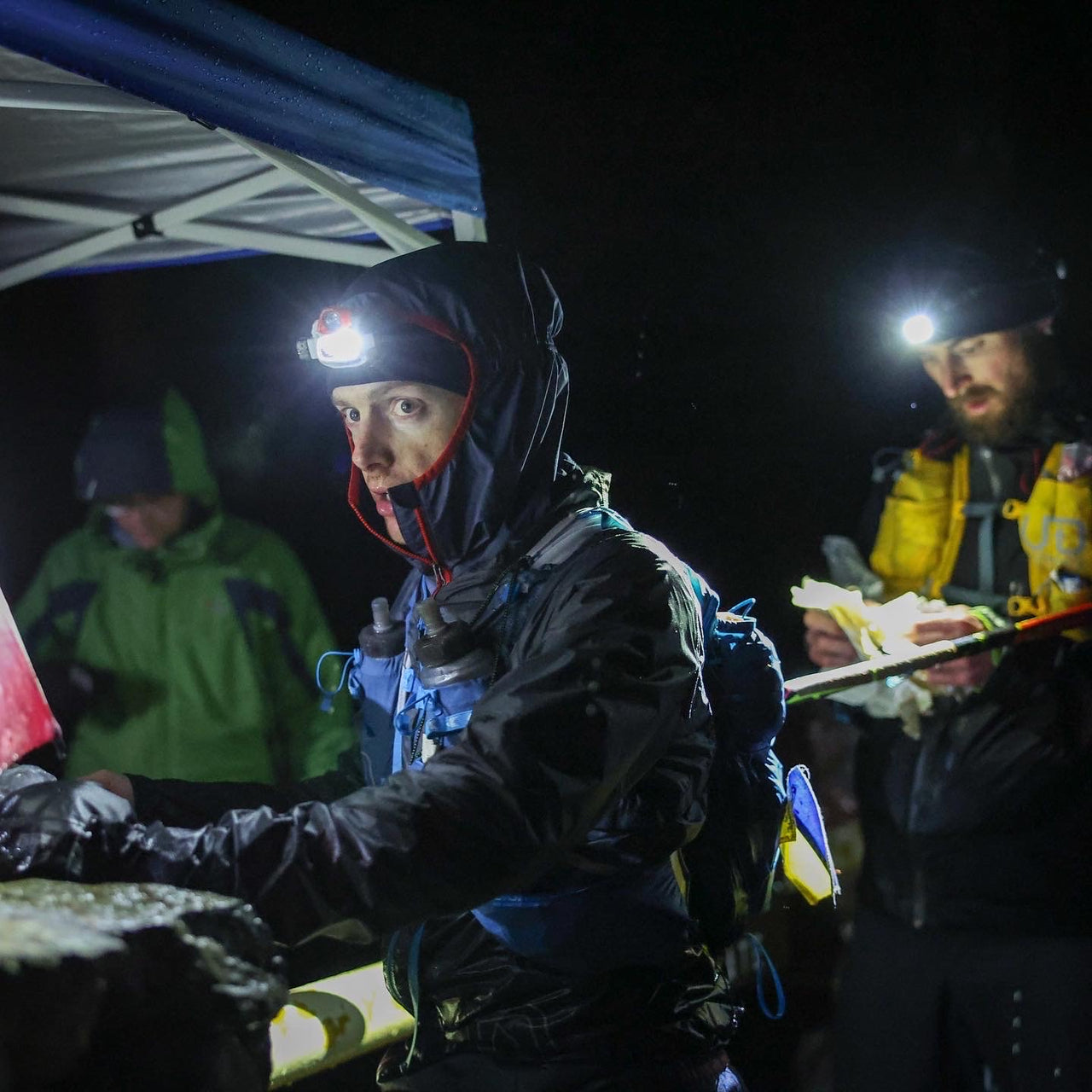
Physical and mental preparation
You have to learn how to get comfortable with being uncomfortable. Racing in the winter means you have a high chance of racing in adverse conditions, you need to replicate these in training, so you learn how to deal with them. These challenging conditions can push your emotions and risk making poor decisions. Use your breathing to focus your energy, let the breath centre your mind and body in the present so you focus on what needs to be done now and not worry about the bigger picture in that particular moment.
If the weather is bad, simply suck it up and get out there and learn. You need to learn what happens if your feet are wet for a prolonged period – does your shoe-sock combination work? Can you still work the zips on your running vest and open food packets with your gloves on? How quickly can you get your waterproofs on/off and thus how best to pack your running vest so you can access the key items quickly?
Nutrition & Hydration
As with any endurance event, training or racing, your stomach is key to your success! You therefore need to test and refine in training the nutrition strategy which will work for you.
With the longer, ultra-endurance, events we need to consider the addition of more complex nutrition rather than simply relying on gels or carbohydrate drinks. The addition of fats and proteins will not only keep your stomach happy, but also reduce the damage that the events put on the body.
When selecting your nutrition you need to consider how it will stand up to extremes of temperature, prolonged wet weather, etc. A bar which freezes solid or sandwich that goes soggy is unlikely to be eaten, resulting in low energy, poor decisions and risky situations developing.
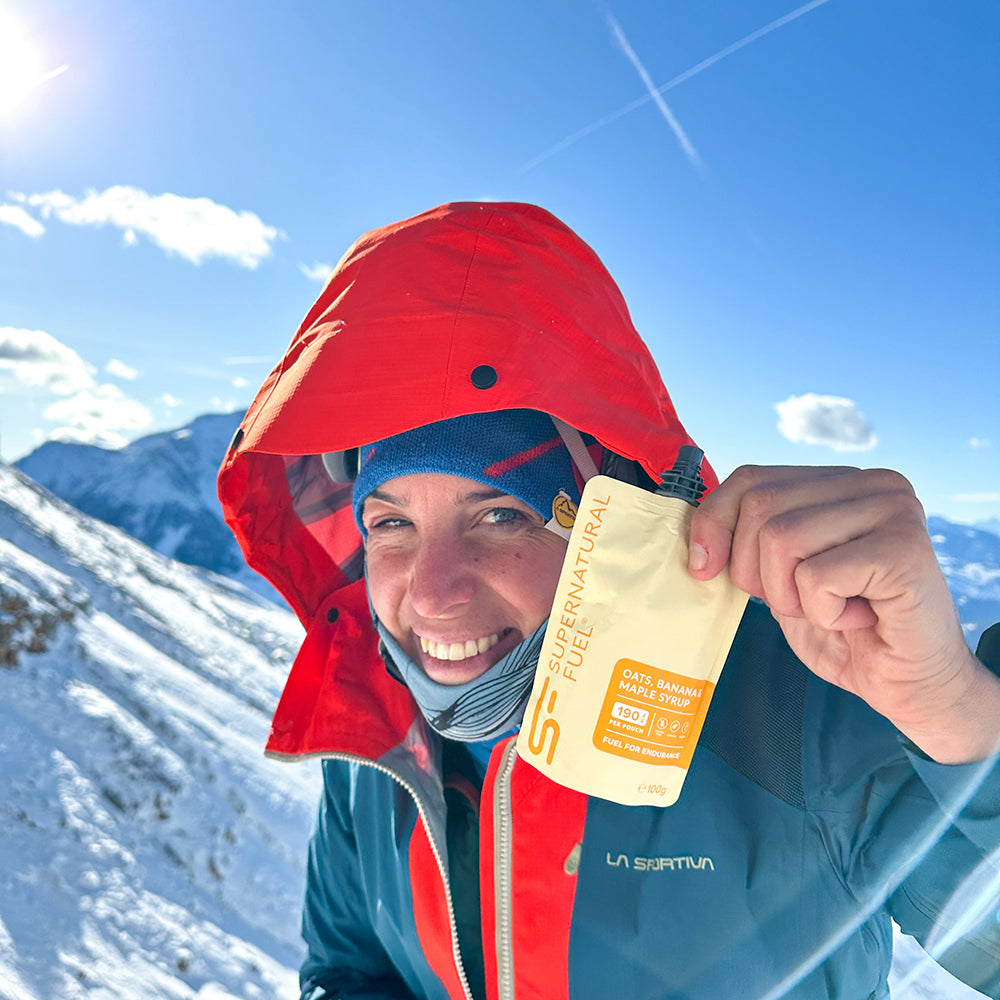
This is why I add a SuperNaturalFuel pouch into the mix for longer training and racing events (alongside other more simple fast acting carbohydrates) to get that mix of fats, proteins and carbs in real food form but easily consumed and digested. The pouches will withstand the cold and wet, and are easily opened and consumed quickly with gloves on making them ideal for challenging winter weather.
Even in the cold we need to give hydration careful consideration. While sweat rates are likely to be lower and your thirst response is often blunted in colder temperatures you still need to be drinking to maintain hydration levels. Use your training sessions in the winter conditions to learn how much fluid you do loose by weighing yourself before and after your runs or rides, for every 1 kilogram lost that equates to (roughly) 1 litre of fluid. Once you know your hydration requirements from training you can ensure you have a hydration strategy for your race which meets your needs.

Conclusion
Preparing for and thriving in adverse weather conditions is a multifaceted endeavor, encompassing physical readiness, appropriate gear, vigilant safety measures, mental resilience, and tailored nutrition. By embracing the elements you will learn to perform, and even enjoy, the challenges posed by these events. It can even become an integral part of your athletic journey, encouraging you to grow and adapt to develop a deeper connection with the natural world you are in.
Author and Supernatural Fuel Ambassador Tim Piggott is a sports physiotherapist, university academic, and endurance coach with over 20 years of experience working with beginners through to international and Olympic athletes across a multitude of sports.
Photo Credit P1-2: Jose Miguel Muñoz for Scarpa.


